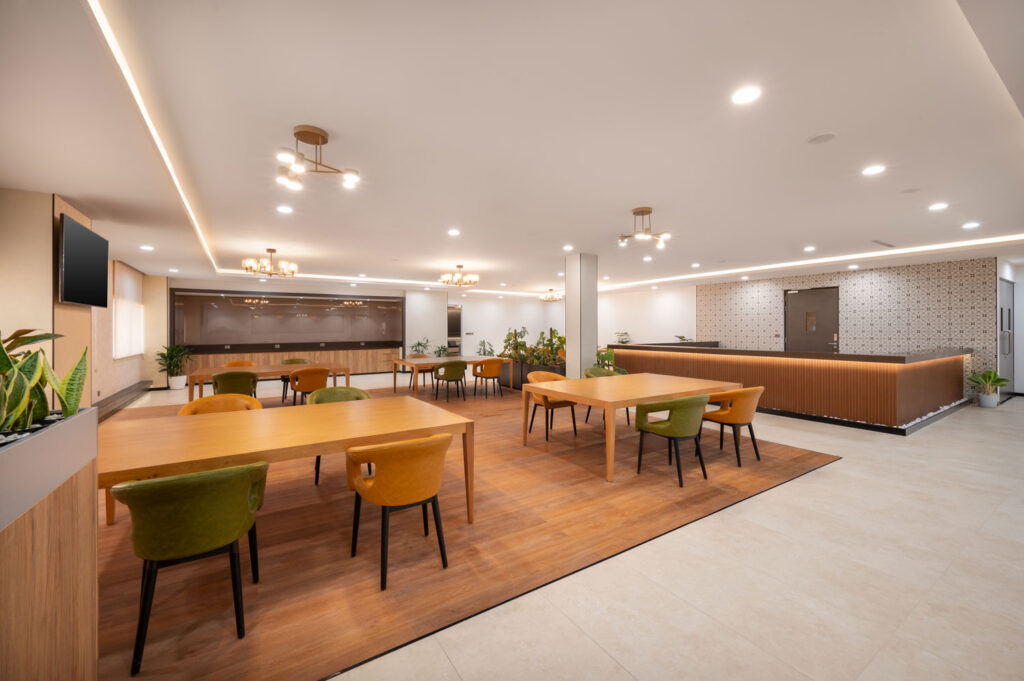In today’s diverse workforce, spanning multiple generations from Baby Boomers to Gen Z, the need for effective collaboration has become critical more than ever. As each generation brings their unique perspectives, experiences and skill sets to the table, cross-generational collaboration has become a key driver of innovation and success.
However, bridging the generation gap can sometimes present challenges, as different communication styles, work preferences and technological fluency come into play.
At Acorp, our inclination towards fostering cross-generational collaboration is through the concept of reverse mentoring. Traditionally, mentoring has involved older, more experienced employees guiding younger colleagues.
However, reverse mentoring flips this dynamic on its head by pairing younger employees with more seasoned counterparts to exchange knowledge, skills, and insights. Integrating reverse mentoring into workplace environments requires careful consideration of space design to facilitate meaningful interactions and learning opportunities across generations.



Here are some key principles to keep in mind:
1. Flexible Spaces: Create adaptable work environments that accommodate various work styles and preferences. From collaborative open areas to quiet zones for focused work, providing a range of tech-enabled spaces with array of flexible furniture ensures that employees can choose the setting that best suits their needs for mentorship sessions and discussions.
2. Technology Integration: Embrace technology as an integral tool for collaboration and knowledge sharing. Equip meeting spaces with interactive displays, video conferencing capabilities and other digital tools that facilitate seamless communication and information exchange between mentors and mentees, regardless of their age or technical proficiency.
3. Comfort and Accessibility: Design spaces with inclusivity in mind, considering the comfort and accessibility of all employees, regardless of age, race or physical abilities. Ensure that seating, lighting and other elements are ergonomically designed and easily adjustable to accommodate diverse needs and preferences.
4. Informal Gathering Areas: Foster spontaneous interactions and relationship-building opportunities by incorporating informal gathering areas throughout the workplace. Whether it’s a cozy lounge space or a communal kitchen / cafeteria, these casual settings encourage organic conversations and mentorship exchanges outside of formal meetings.
5. Cross-Generational Experiences: Facilitate structured learning but unwinding experiences that promote cross-generational collaboration and skill development. Organize workshops, training sessions or lunch-and-learn events where employees can share their expertise and learn from one another in a supportive and inclusive environment. Develop spaces like Music Room, Recreation areas, Yoga Room, Gym etc where various age group can come together and engage into various activities away from their mundane routines.
By intentionally designing spaces that promote cross-generational collaboration and integrating reverse mentoring into workplace environments, organizations can harness the collective wisdom, creativity and innovation of employees across all generations.




